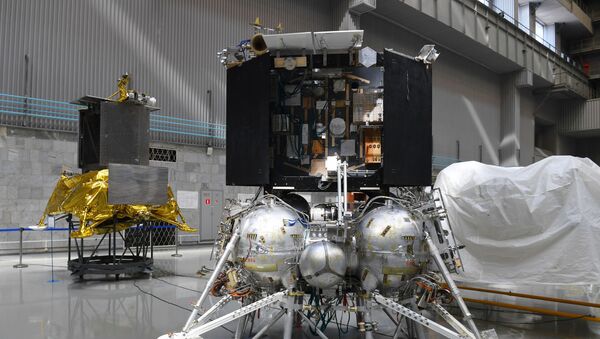The first images of the Spektr-RG space observatory flying through space have been released online, with Alexander Ivanov, chief of the space observatory at Kuban State University in southern Russia, publishing a short video showing the spacecraft zooming over the planet on his VKontakte page.
The video, authenticated by the Russian Space Research Institute, showed the Blok D upper stage flying over the atmosphere, followed by the space observatory itself, against the backdrop of the Vulpecula constellation.
Later, Ivanov released an image showing that the satellite had accelerated and was moving in parallel with the upper stage.
Spektr-RG is set to continue on its way to Lagrange Point 2, a point in the solar system about 1.5 million km from Earth, reaching its destination about 100 days after Saturday's launch. Once in place, it will conduct ultra-detailed mapping of the entire night sky, expecting to discover about 100,000 galaxy clusters, hundreds of thousands of active stars and about 3 million supermassive black holes over its six-and-a-half-year lifespan.
In addition to mapping, astronomers hope that the system will add to their understanding about the cosmic distribution of matter, to our understanding of how black holes are formed, and the nature of dark energy and what role it plays in accelerating the expansion of the universe.
Spektr-RG was first conceived of in the mid-1980s by scientists from the USSR, Finland, East Germany, Denmark, Italy and the UK, with scientists initially hoping to launch the system in the mid-1990s. However, the ambitious plans fell victim to cost-cutting faced by the Russian space industry following the USSR's breakup. Work to resume the project began in 2002, and a new mission concept was confirmed in 2005. Scientists from the German Space Agency contributed the system's main instrument - its super-high resolution eROSITA x-ray space telescope.
The Spektr-RG is the successor to Spektr-R, a radio telescope launched in July 2011, which stopped responding to ground control in January, and whose mission was formally declared complete in late May. Spektr-R provided scientists with new information on black holes, neutron stars, and Earth's magnetic field. In late April, Roscomos put together an incredible symphonic arrangement to the sounds made by pulsars using data gathered from the satellite.



